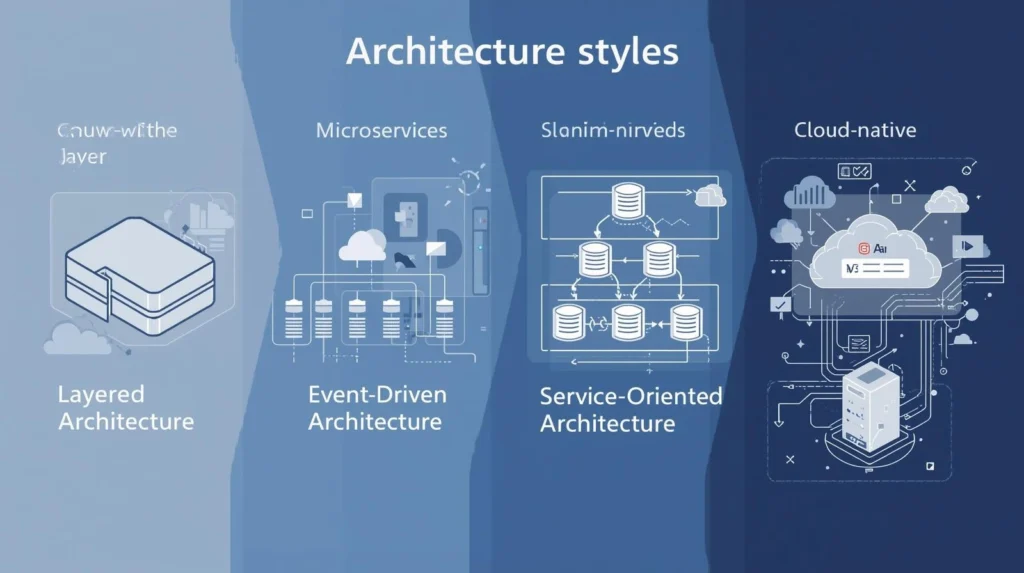Software Architecture: Crafting the Backbone of Modern Applications
Have you ever wondered why some apps run smoothly while others feel like a maze of glitches and slow responses? The secret often lies in software architecture—the blueprint that shapes how an application is built, maintained, and scaled. Think of it as the foundation of a house: if it’s solid, everything on top stands strong; if it’s shaky, problems pile up quickly. In this article, we’ll break down what software architecture really is, why it matters, the types you should know, and how modern trends are reshaping it. No jargon-filled lectures—just clear, practical insights.
What Is Software Architecture, Really?
At its core, software architecture is the structured plan behind an application. It defines how components communicate, how data flows, and how the system scales over time. Like an architect creating blueprints before construction, software architects design the skeleton of a system before any code is written. Why bother? Because skipping this step often leads to messy code, slow performance, and costly redesigns down the line.
Why Every Business Should Care About Architecture
Good architecture isn’t just a techie concern—it directly affects the bottom line. Here’s how:
Clear Roadmap for Developers: Everyone knows what goes where, reducing confusion and delays.
Scalability Made Simple: Whether your app handles 100 users or 1 million, a solid architecture keeps it running smoothly.
Built-in Security: Structuring your system properly makes managing data and access points easier.
Easier Maintenance: Adding features, fixing bugs, or upgrading systems becomes straightforward.
So yes, investing in architecture early saves headaches later.
Common Software Architecture Styles

Here’s a quick tour of the main types:
Layered Architecture: The classic approach, dividing software into presentation, business logic, and data layers. Each layer has a clear job—easy to understand and maintain.
Microservices: Modern apps often use this method, breaking a system into small, independent services. It’s flexible, scalable, and fault-tolerant.
Event-Driven: Perfect for real-time systems like messaging apps or monitoring platforms, reacting to events as they happen.
Service-Oriented Architecture (SOA): Enables different services to communicate seamlessly across platforms.
Cloud-Native: Built specifically for cloud environments, maximizing resilience, scalability, and distributed computing.
Principles That Make Architecture Work
Not all software architecture is created equal. Here’s what separates a strong framework from a weak one:
Keep it Simple: Complexity is the enemy of reliability.
Modularity: Smaller, independent components are easier to manage.
Flexibility: Technology evolves—so should your system.
Security by Design: Don’t bolt on security as an afterthought.
Performance Efficiency: Fast response times and smart resource use matter.
Why Strong Architecture Pays Off
Investing in good design isn’t just a technical choice—it’s a smart business move:
Saves Money: Avoid costly reworks and redesigns.
Speeds Up Development: Teams can work independently with fewer bottlenecks.
Enhances User Experience: Smooth back-end operations mean happy users.
Ensures Long-Term Viability: The software can grow with your business without constant breakdowns.
Emerging Trends in Software Architecture
The field isn’t static. Here’s what’s shaping the future:
AI and Machine Learning: Intelligent systems need flexible, scalable architectures.
Edge Computing: With data processed closer to the source, designs are becoming more decentralized.
Cybersecurity Focus: Rising cyber threats mean security-first architecture is non-negotiable.
Sustainable Design: Green IT is influencing how apps are built to be energy-efficient.
Challenges Developers Face
Even with the best intentions, implementing solid architecture can be tricky:
High upfront costs for planning and skilled talent.
Complexity when scaling large systems.
Rapid tech evolution requiring constant updates.
Balancing flexibility with control—too much of either can backfire.
Best Practices for Modern Architecture
Want to get it right? Here’s a roadmap:
Understand Requirements: Know business goals and user needs upfront.
Use Proven Design Patterns: Don’t reinvent the wheel.
Prioritize Security: Build it in from the start.
Adopt Agile and DevOps: Architecture should complement modern development.
Review Regularly: Architecture evolves—so should your designs.
Looking Ahead: The Future of Software Architecture
We’re heading toward even smarter, more adaptable systems:
AI-Optimized Architecture: Systems that self-optimize.
Quantum-Ready Systems: Preparing for the computing revolution.
Immersive Experiences: AR/VR applications need real-time rendering support.
Global Collaboration: Remote work demands secure, distributed architecture.
Conclusion
In the world of digital solutions, software architecture is the unsung hero. It shapes every line of code, every feature, and every user experience. By investing in scalable, secure, and efficient design today, businesses position themselves for a future of seamless growth and innovation. Think of it like building a skyscraper: the taller you aim, the stronger your foundation must be.
FAQs
1. What is software architecture?
Software architecture is the structured blueprint of a software system that defines how its components interact, how data flows, and how the system scales over time. It acts as the foundation for building reliable, maintainable, and efficient applications.
2. Why is software architecture important?
It provides a clear roadmap for developers, ensures scalability, strengthens security, simplifies maintenance, and ultimately saves time and money by preventing costly redesigns.
3. What are the main types of software architecture?
The common types include:
Layered Architecture
Microservices Architecture
Event-Driven Architecture
Service-Oriented Architecture (SOA)
Cloud-Native Architecture
4. What principles make software architecture effective?
Key principles include simplicity, modularity, flexibility, security by design, and performance efficiency. Following these ensures a system is reliable and future-proof.
5. How does software architecture affect business outcomes?
A well-structured architecture improves development speed, reduces errors, enhances user experience, and allows systems to scale with business growth, making it a critical strategic asset.







